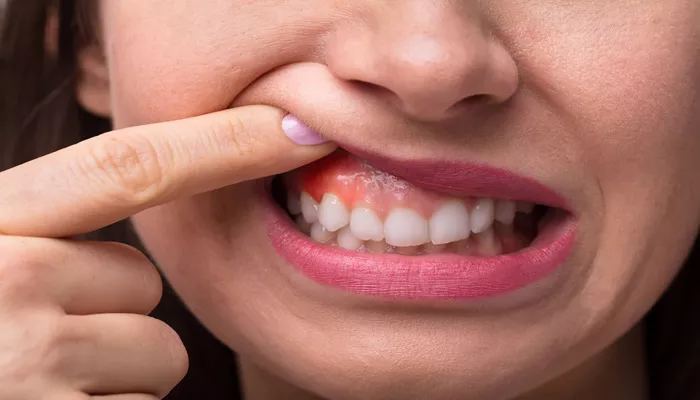Gingivitis, a mild form of gum disease, is common and usually reversible with proper dental care. However, once it progresses or causes gum recession, patients often wonder: can gums truly grow back after gingivitis? This question highlights a key concern in oral health. Gum recession, inflammation, and damage caused by plaque and bacteria can compromise not only aesthetics but also function.
This article offers an in-depth look at the healing potential of gums post-gingivitis, the biological limitations of gum regrowth, and modern treatments available to restore oral health. By integrating essential keywords such as bad breath, root canal, and gum disease, we ensure a comprehensive understanding of how to manage gingivitis and its aftereffects.
What Is Gingivitis?
Gingivitis is the earliest stage of periodontal disease. It is primarily caused by plaque accumulation along the gumline. Symptoms include redness, swelling, bleeding during brushing, and bad breath. If left untreated, gingivitis can advance to periodontitis, leading to irreversible gum damage and tooth loss.
How Gingivitis Affects Gum Tissue
In the initial stages, gingivitis inflames the gingival tissue without damaging the bone or deeper structures. The inflammation results from bacterial toxins and immune response. Fortunately, this stage does not usually involve gum recession or permanent tissue loss.
With prompt intervention—regular brushing, flossing, and professional cleanings—gingival inflammation can be reversed.
However, if neglected, gum disease progresses, and the gum margin pulls away from the teeth, forming pockets. This is where tissue damage becomes more permanent.
Can Gums Regrow After Gingivitis?
Technically, once the gum tissue has receded due to disease, it does not grow back naturally. Gingival tissue, unlike bone or skin, has limited regenerative ability. However, if detected early, gingivitis can be reversed before any recession or attachment loss occurs. In this state, the tissue may regain firmness and color, but actual regrowth of lost gum line is not biologically feasible without surgical aid.
The Difference Between Reversal and Regrowth
It’s important to distinguish between healing and regrowth:
Healing – Involves the reduction of inflammation, swelling, and bleeding.
Regrowth – Refers to the actual return of lost gum tissue height and attachment.
Gingivitis treatment promotes healing. True regrowth, especially after recession, requires surgical procedures such as gum grafting.
Signs Your Gums Are Healing
After successful treatment, signs of healing include:
- Pink, firm gum tissue
- No bleeding on brushing
- Reduced gum sensitivity
- Improved breath (reduction in bad breath)
When Is Surgical Intervention Needed?
If gingivitis has led to periodontitis, and recession has occurred, professional intervention becomes essential. Surgical options include:
Gum grafting – Uses tissue from another part of the mouth to cover exposed roots.
Pinhole surgical technique – A minimally invasive method to reposition the gum tissue.
Flap surgery – Removes deep bacteria and repositions the gums for better healing.
The Role of Root Canal in Gum Health
Though root canal therapy is more closely linked to tooth infection, it can indirectly relate to gum health. An infected root can mimic gum disease symptoms. In such cases, root canal treatment resolves deep infections, supporting the overall healing of the oral environment.
Gum Disease and Systemic Health
Advanced gum disease doesn’t only affect oral tissues. It can increase risks for:
- Heart disease
- Diabetes
- Respiratory issues
Hence, treating gingivitis promptly is crucial not just for aesthetics and comfort but for systemic health.
How to Prevent Gum Recession
Though gum regrowth is limited, prevention is effective. Consider the following practices:
- Brush with a soft-bristled toothbrush
- Floss daily to remove interdental plaque
- Use therapeutic mouthwash
- Schedule regular dental cleanings
These steps also help control halitosis, commonly known as bad breath.
Destructive Habits That Worsen Gum Recession
Several factors accelerate gum tissue loss:
- Aggressive brushing
- Smoking
- Bruxism (teeth grinding)
- Poor-fitting dental appliances
Orthodontic Treatments and Gum Health
Misaligned teeth can contribute to gingivitis. Orthodontic correction (braces or aligners) reduces plaque traps. However, it also increases the need for rigorous hygiene to avoid inflammation.
Can Natural Remedies Help?
While natural remedies such as saltwater rinses, aloe vera gel, and green tea can reduce inflammation, they should complement—not replace—professional care. These may alleviate early signs but cannot reverse significant gum recession or root exposure.
When to Consider a Periodontist
General dentists manage mild to moderate gingivitis. If symptoms persist or progress, a periodontist specializes in gum tissue regeneration and disease management. Referral may be needed for grafting or flap surgeries.
Advanced Treatments for Gum Tissue Restoration
Newer regenerative procedures aim to stimulate tissue growth:
- Platelet-rich fibrin (PRF) application
- Guided tissue regeneration (GTR)
- Laser therapy
These methods attempt to promote tissue healing around the tooth root and reduce pocket depth.
Link Between Gum Disease and Tooth Loss
Gum disease, if unchecked, leads to bone loss. As the support structure weakens, teeth loosen. In many cases, patients requiring root canal therapy may also need periodontal treatment to preserve the surrounding tissue.
Gum Regrowth Myths
There are common misconceptions:
“Gums can grow back on their own” – Not true without surgical intervention.
“Toothpastes can regrow gums” – They may reduce inflammation but don’t rebuild tissue.
“Vitamin supplements regrow gums” – Vitamins help healing, not regeneration.
Cost of Gum Regeneration Procedures
Gum grafting procedures can range between $600 and $1,200 per site. Insurance may cover some if deemed medically necessary. Costs vary based on severity and location.
Conclusion
Gingivitis is reversible if caught early, but true gum regrowth after tissue loss does not occur naturally. While healing can restore gum appearance and reduce symptoms like bad breath, lost tissue due to recession must be treated with surgical methods. Preventive care remains the most effective strategy. Brush gently, floss daily, and maintain regular dental visits. When in doubt, seek advice from dental professionals to explore appropriate therapies for optimal oral health.

